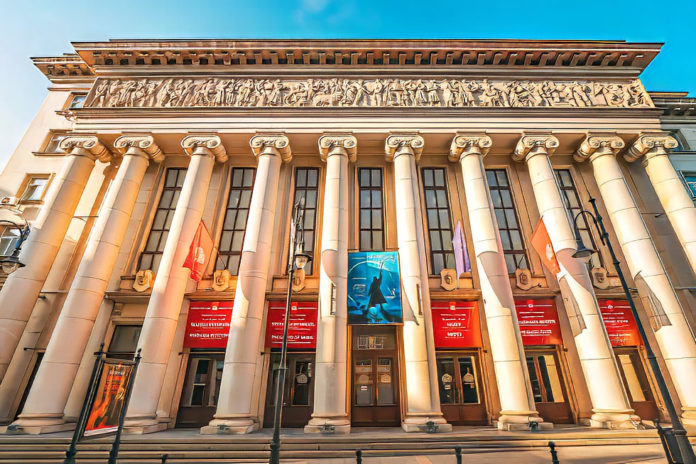A Cultural Landmark at the Heart of Sofia
Nestled between the golden domes of Alexander Nevsky Cathedral and the tree-lined boulevards of downtown Sofia stands one of Bulgaria’s most cherished cultural institutions: the National Opera and Ballet. With its elegant neoclassical façade, soaring columns, and grand bronze sculptures, this building is more than a performance venue—it’s a symbol of Bulgaria’s artistic spirit.
Whether you’re a seasoned opera-goer or a curious traveler, stepping into this theater is a journey through Bulgaria’s history, resilience, and passion for the arts. The echoes of powerful arias and graceful pirouettes fill not just the stage, but the national identity itself.
Origins: When Bulgaria Found Its Voice
The roots of Bulgarian opera trace back to the late 19th century, shortly after Bulgaria’s liberation from Ottoman rule. In a new era of national awakening, artists and intellectuals sought to define a uniquely Bulgarian cultural identity. One of their tools? Opera.
In 1890, the Capital Opera and Drama Company (Столична опера и драматичен театър) was formed, laying the foundation for professional opera in Bulgaria. Though short-lived, it inspired the creation of the Bulgarian Opera Society in 1908. This group would evolve into what we now know as the National Opera and Ballet.
By 1921, the ensemble was nationalized and renamed the “National Opera,” and the addition of a ballet troupe in 1928 completed the dual pillars of the institution. With singers, dancers, and musicians trained both locally and abroad, Bulgaria’s opera house rapidly built a reputation as a cultural powerhouse in the Balkans.
A Jewel of Neoclassical Architecture
The opera house as we see it today took shape in the early 20th century. Construction began in 1921, guided by architect Lazar Parashkevanov, who fused neoclassical principles—symmetry, white columns, triangular pediments—with subtle regional flourishes.
The grand opening took place in 1953, delayed in part by World War II and the postwar recovery. Though the structure had suffered significant damage during the 1944 bombing of Sofia, its rebuilding was seen as a symbol of national renewal.
With a stately portico flanked by bronze lion statues and an interior of red velvet, gilded ornaments, and an opulent 947-seat main hall, the building impresses at first glance. A smaller Chamber Hall, used for recitals and experimental works, adds to the artistic versatility.
From War to Renaissance
Despite the hardships of the 20th century—wars, political upheaval, and censorship—the National Opera survived and even thrived. In the communist era, it became a state-supported institution, expanding its repertoire and infrastructure, often using opera and ballet as tools of cultural diplomacy.
Many now-classic Bulgarian operas were created or premiered here. Among them:
- “Borislav” (1911) by Maestro Georgi Atanasov
- “Tsar Kaloyan” (1936) and “Ivaylo” (1958) by Pancho Vladigerov
- “Maria Desislava” (1930) by Parashkev Hadjiev
These works blended Western classical form with Bulgarian folklore, history, and language—telling stories about medieval kings, heroic uprisings, and timeless myths.
On the ballet stage, Bulgarian dancers embraced both the classical Russian school and contemporary interpretations, earning international acclaim.

What to Expect Today: Opera, Ballet & Beyond
Today, the National Opera and Ballet of Sofia is a thriving institution that stages over 180 performances per year, ranging from classical favorites to modern premieres.
Opera Highlights
Expect performances of the big names—Verdi, Puccini, Mozart, Bizet—alongside lesser-known Slavic composers. Bulgarian operas are frequently featured, often with English subtitles.
Ballet Performances
The ballet company performs year-round, with repertoire including Swan Lake, Giselle, Don Quixote, and The Nutcracker. Contemporary works also find their way into the schedule, offering fresh takes on classic movement.
Festivals & Summer Stages
- Opera of the Peaks – an open-air summer festival set among the majestic Belogradchik Rocks, blending nature and performance in breathtaking harmony.
- Opera in the Park – held in Sofia’s Military Academy Park, this family-friendly series offers accessible outdoor performances each June–July.
- Occasional international tours and joint productions with European companies bring in global flair.
Visit the National Opera in Sofia: Practical Info
Address: 1 Vrabcha Street, Sofia 1000 – Map
Nearest metro: Serdika or SU St. Kliment Ohridski (about a 7–10 minute walk)
Tickets: Available online via the Opera House website or at the onsite box office. Prices vary—typically 10–50 BGN depending on the performance and seating.
Language: Most operas are sung in the original language with Bulgarian and English subtitles.
When to go: September to June is the core season; summer offers open-air shows. Weekend performances are common, with matinees often suitable for families.
Accessibility: The main hall is wheelchair accessible. Contact the opera in advance for accommodations.
Notable Names and Proud Legacies
Bulgaria has produced a galaxy of world-renowned opera talents—many of whom first sang on the Sofia stage before taking the world’s grandest theaters by storm.
Among the legends:
- Ghena Dimitrova, the powerhouse soprano famed for her dramatic Verdi roles and commanding stage presence
- Nicolai Ghiaurov, one of the most excellent basses of the 20th century, was a fixture at La Scala and the Met
- Raina Kabaivanska, the lyrical soprano whose career spanned decades and continents with finesse and elegance
And continuing that tradition is Sonya Yoncheva—a soprano of international stardom and a new-generation ambassador for Bulgarian opera. Born in Plovdiv and trained at the Conservatoire de Musique de Genève, Yoncheva rose to prominence after winning Plácido Domingo’s Operalia competition in 2010. She has since headlined at the Metropolitan Opera, Royal Opera House, Berlin State Opera, and beyond.
With signature roles such as Tosca, Norma, La Traviata, and Mimi in La Bohème, Yoncheva is praised for her emotional depth, vocal warmth, and captivating stage presence. Despite her global fame, she remains deeply connected to Bulgaria—frequently performing in Sofia and supporting young Bulgarian artists through educational initiatives and masterclasses.
Her success exemplifies the lasting artistic power of Bulgaria’s operatic tradition—and its bright future on the world stage.
Photo by EdNurg



